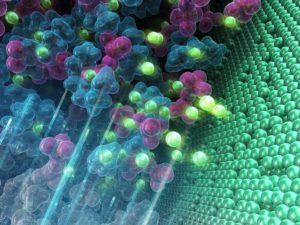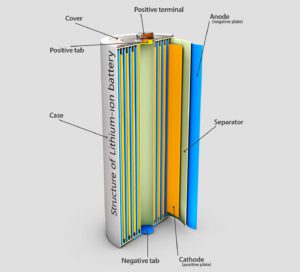Researchers at the DOE’s Oak Ridge National Laboratory (ORNL) have developed a new method for producing cathodes for lithium-ion batteries by relying on hydrothermal synthesis, which eliminates the need to use cobalt, making the process quicker, less wasteful and less toxic. They describe their work in: “Hydrothermal synthesis of Co-free NMA cathodes for high-performance Li-ion… Read more »
Search Results Found For: "EV ARC"
Can an EV go through a car wash? Common Google searches reveal the level of cluelessness about EVs
The greatest obstacle to EV adoption may not be range anxiety, unreliable public charging, or even the high upfront costs, but rather the lack of consumer awareness about EVs. Like most electric drivers, I regularly field ridiculous questions both on the road and online, and some of the things people say to me reveal the… Read more »
Qualcomm and Renault to co-develop architecture for software-defined EVs
Renault and Qualcomm Technologies plan to collaborate on plans for a centralized computer architecture for Renault’s next generation of software-defined vehicles (SDVs), based on Qualcomm’s Snapdragon Digital Chassis. The architecture will support digital cockpit, connectivity and advanced driver assistance systems (ADAS). Qualcomm will also invest in Ampere, Renault’s dedicated electric and software company. Starting in… Read more »
Researchers study particle boundaries in cathodes, develop new NMC cathode design
Image shows single crystals of cathode material: (A) no internal boundaries and (B) internal boundaries visible. (Image by Argonne National Laboratory.) A research team has developed a new NMC cathode design that prevents cracking in cathode particles through a structure that doesn’t have boundaries between particles. “A different approach to avoid this cracking involves single-crystal… Read more »
Researchers achieve a breakthrough in the development of lithium metal batteries
A team of researchers working in collaboration with the Nagoya Institute of Technology has discovered a new mechanism to stabilize the lithium metal electrode and electrolyte in lithium metal batteries. The researchers say the new mechanism, which does not depend on the traditional kinetic approach, has the potential to enhance the energy density of batteries…. Read more »
Researchers develop cobalt-free cathode using high-entropy doping
A team of researchers from UC Irvine and four national laboratories has fabricated a cobalt-free cathode for lithium-ion batteries. The researchers relied on doping using HE-LMNO and magnesium, titanium, manganese, molybdenum and niobium inside the structure to fabricate a high-nickel cathode. “Through a technique we refer to as ‘high-entropy doping,’ we were able to successfully… Read more »
Innovative New Anode-Free Cell Enables Dual-Chemistry EV Battery Architectures
Michigan-based energy storage company Our Next Energy (ONE) has unveiled a 240 Ah prismatic anode-free cell after a 12-month R&D effort. ONE new technology will enable the commercialization of its Gemini dual-chemistry architecture, which will be integrated into a BMW iX prototype vehicle later this year. ONE’s 1,007 Wh/L cell eliminates the need for graphite… Read more »
Researchers develop closed-loop method for lithium recovery from batteries
A team of researchers from Worcester Polytechnic Institute and the DOE’s Argonne National Laboratory have developed a closed-loop process for recovering lithium from lithium-ion batteries. In an article published in Green Chemistry, the researchers write: “We developed a sustainable lithium recovery process, which can selectively leach and recover lithium with formic acid before recycling valuable… Read more »
ONE reveals 1,007 Wh/L anode-free cell that enables a dual-chemistry battery architecture
Michigan-based energy storage company Our Next Energy (ONE) has unveiled a 240 Ah prismatic anode-free cell after a 12-month R&D effort. ONE says the new technology will enable the commercialization of its Gemini dual-chemistry architecture, which will be integrated into a BMW iX prototype vehicle later this year. ONE says its 1,007 Wh/L cell eliminates… Read more »











